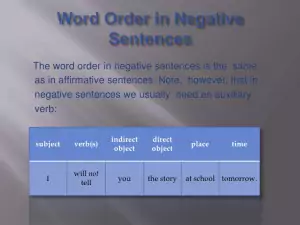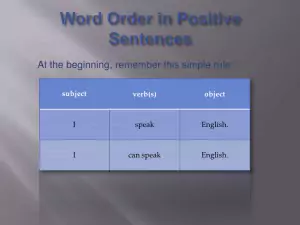
✅ AI Essay Writer ✅ AI Detector ✅ Plagchecker ✅ Paraphraser
✅ Summarizer ✅ Citation Generator
Word Order in Positive Sentences
The basic rule of English syntax for positive sentences is that between a subject and an object of a sentence there should be a verb (or a predicate). Simply put, English sentences have the following basic structure:
subject – verb (predicate) – object.
e.g. A dog (subject) is running (verb) after a ball (object).
A more complex sentence structure is complemented by indirect objects, and the modifiers of time and place.
subject – verb (predicate) – indirect object – object – place – time.
e.g. Jack (subject) said he would tell (verb) me (indirect object) his story (object) later (time), at home (place).
Word Order in Negative Sentences
Word order in negative sentences does not differ too much from the structure of positive sentences; the main difference is that in negative sentences, you also need to use an auxiliary verb depending on the tense.
e.g. I (subject) don’t want to talk (auxiliary + verb) about it (object) right now (time).
Auxiliary verbs can be also called helping verbs, as they are needed to form tenses, or express different shades of time and mood. Among the most common auxiliary verbs, one should remember the following: do/did, all forms of “to be,” have/has/had.
Follow us on Reddit for more insights and updates.



Comments (0)
Welcome to A*Help comments!
We’re all about debate and discussion at A*Help.
We value the diverse opinions of users, so you may find points of view that you don’t agree with. And that’s cool. However, there are certain things we’re not OK with: attempts to manipulate our data in any way, for example, or the posting of discriminative, offensive, hateful, or disparaging material.
Comments are closed.